November 25th marked the beginning of a 16 days campaign of activism against sexual and gender-based violence. We’ve selected for the occasion 16 titles in our collections – mixing academic and humanitarian perspectives on sexual and gender-based violence in armed conflicts.
Understanding sexual violence in wartime and its roots: multidisciplinary perspectives
Conflict-related violence against women: transforming transition / Aisling Swaine. Cambridge University Press, 2018. [e-book available for ICRC staff]
 By comparatively assessing three conflict-affected jurisdictions (Liberia, Northern Ireland and Timor-Leste), Conflict-Related Violence against Women empirically and theoretically expands current understanding of the form and nature of conflict-time harms impacting women. The ‘violences’ that occur in conflict beyond strategic rape are first identified. Employing both a disaggregated and an aggregated approach, relations between forms of violence within and across each context’s pre-, mid- and post-conflict phase are then assessed, identifying connections and distinctions in violence. Swaine highlights a wider spectrum of conflict-related violence against women than is currently acknowledged. She identifies a range of forces that simultaneously push open and close down spaces for addressing violence against women through post-conflict transitional justice. The book proposes that in the aftermath of conflict, a transformation rather than a transition is required if justice is to play a role in preventing gendered violence before conflict and its appearance during and after conflict.
By comparatively assessing three conflict-affected jurisdictions (Liberia, Northern Ireland and Timor-Leste), Conflict-Related Violence against Women empirically and theoretically expands current understanding of the form and nature of conflict-time harms impacting women. The ‘violences’ that occur in conflict beyond strategic rape are first identified. Employing both a disaggregated and an aggregated approach, relations between forms of violence within and across each context’s pre-, mid- and post-conflict phase are then assessed, identifying connections and distinctions in violence. Swaine highlights a wider spectrum of conflict-related violence against women than is currently acknowledged. She identifies a range of forces that simultaneously push open and close down spaces for addressing violence against women through post-conflict transitional justice. The book proposes that in the aftermath of conflict, a transformation rather than a transition is required if justice is to play a role in preventing gendered violence before conflict and its appearance during and after conflict.
Sexual violence against men in global politics / ed. by Marysia Zalewski, Paula Drumond, Elisabeth Prügl, and Maria Stern. Routledge, 2018.
/ ed. by Marysia Zalewski, Paula Drumond, Elisabeth Prügl, and Maria Stern. Routledge, 2018.
Sexual violence against men is an under-theorised and under-noticed topic, though it is becoming increasingly apparent that this form of violence is widespread. Yet despite emerging evidence documenting its incidence, especially in conflict and post-conflict zones, efforts to understand its causes and develop strategies to reduce it are hampered by a dearth of theoretical engagement. One of the reasons that might explain its empirical invisibility and theoretical vacuity is its complicated relationship with sexual violence against women. The latter is evident empirically, theoretically, and politically, but the relationship between these violences conjures a range of complex and controversial questions about the ways they might be different, and why and how these differences matter.
Wartime sexual violence: from silence to condemnation of a weapon of war / Kerry F. Crawford. Georgetown University Press, 2017.
Conflict-related sexual violence has transitioned rapidly from a neglected human rights issue to an unambiguous security concern on the agendas of powerful states and the United Nations Security Council. Through interviews and primary-source evidence, the author investigates the reasons for this dramatic change. Views about wartime sexual violence began changing in the 1990s as a result of the conflicts in the former Yugoslavia and Rwanda and then accelerated in the 2000s. Three case studies—the United States’ response to sexual violence in the Democratic Republic of Congo, the adoption of UN Security Council Resolution 1820 in 2008, and the development of the United Kingdom’s Preventing Sexual Violence in Conflict Initiative—illustrate that use of the weapon of war frame does not represent pure co-optation by the security sector. Rather, well-placed advocates have used this frame to advance the anti-sexual violence agenda.
Rape during Civil War / Dara Kay Cohen. Cornell University Press, 2016.
/ Dara Kay Cohen. Cornell University Press, 2016.
Rape is common during wartime, but even within the context of the same war, some armed groups perpetrate rape on a massive scale while others never do. Dara Kay Cohen examines variation in the severity and perpetrators of rape using an original dataset of reported rape during all major civil wars from 1980 to 2012. Cohen also conducted extensive fieldwork, including interviews with perpetrators of wartime rape, in three post-conflict counties, finding that rape was widespread in the civil wars of the Sierra Leone and Timor-Leste but was far less common during El Salvador’s civil war.
Cohen argues that armed groups that recruit their fighters through the random abduction of strangers use rape—and especially gang rape—to create bonds of loyalty and trust between soldiers. The statistical evidence confirms that armed groups that recruit using abduction are more likely to perpetrate rape than are groups that use voluntary methods, even controlling for other confounding factors. Important findings from the fieldwork—across cases—include that rape, even when it occurs on a massive scale, rarely seems to be directly ordered. Instead, former fighters describe participating in rape as a violent socialization practice that served to cut ties with fighters’ past lives and to signal their commitment to their new groups.
Rape loot pillage: the political economy of sexual violence in armed conflict / Sara Meger. Oxford University Press, 2016.
What are the root causes of sexual violence in war? From times of antiquity through the most recent conflicts in Bosnia, Rwanda, the Congo, and Syria, rape and other forms of sexual violence have been a consistent feature of war. Rather than identifying conflict-related sexual violence as an isolated phenomenon, this book argues that sexual violence is a form of gender-based violence (perpetrated against both men and women) and a manifestation of unequal gender relations that are exacerbated by the social, political, and economic conditions of war. She looks at trends in the form and function of sexual violence in recent and ongoing conflicts to argue that, in different contexts, sexual violence takes different forms and is used in pursuit of different objectives. Taking a political economy perspective, she argues that these variations can be explained by broader struggles over territory, assets, and other productive resources of contemporary armed conflicts.
Sexual violence as a war crime: international legal perspectives
Women, armed conflict and international law/ by Judith G. Gardam and Michelle J. Jarvis. Kluwer law international, 2001.
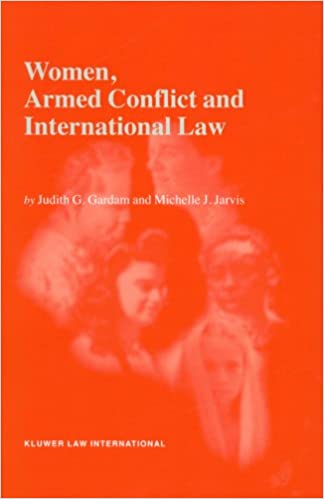 This 2001 volume was upon publication the first broad-based critique of international humanitarian law from a gender perspective. The authors argue that the role that gender plays in determining the experience of those caught up in armed conflict has long been overlooked, as well as the extent to which gender influences the international legal regime designed to address the humanitarian problems arising from armed conflict.
This 2001 volume was upon publication the first broad-based critique of international humanitarian law from a gender perspective. The authors argue that the role that gender plays in determining the experience of those caught up in armed conflict has long been overlooked, as well as the extent to which gender influences the international legal regime designed to address the humanitarian problems arising from armed conflict.
In the early 1990s, prompted by extensive media coverage of the rape of women during the conflict in Bosnia Herzegovina, the international community was forced to critically examine the capacity of international law to respond to such crimes. The prevalence of sexual violence is, the authors argue, however merely one aspect of the distinctive impact of conflict on women. Although a range of factors influence the way individual women experience armed conflict, the endemic gender discrimination that exists in all societies is a common theme: from Cambodia, where women land-mine victims are less likely to receive treatment for their injuries than are men; to South Africa, where women widowed during the Apartheid years have become outcasts in their own society. The authors underscore the need for new approaches to the issue of women and armed conflict, and canvass a range of options for moving forward.
Women’s rights in armed conflict under international law / Catherine O’Rourke. Cambridge University Press, 2020. [e-book available for ICRC staff]
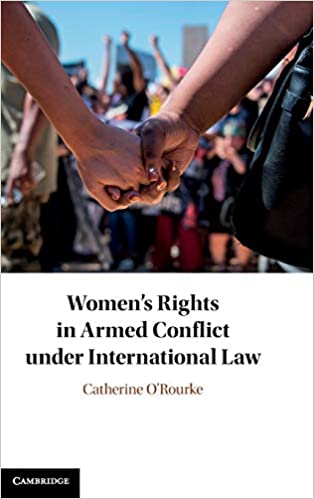 Laws and norms that focus on women’s lives in conflict have proliferated across the regimes of international humanitarian law, international criminal law, international human rights law and the United Nations Security Council. While separate institutions, with differing powers of monitoring and enforcement, implement these laws and norms, the activities of regimes overlap. Women’s Rights in Armed Conflict under International Law is the first book to account for this pluralism and institutional diversity. This book identifies key aspects of how different regimes regulate women’s rights in conflict, and how they interact. Using country case studies to reveal the practical implications of the fragmented protection of women’s rights in conflict, this book offers a dynamic account of how regimes and institutions interact, the extent to which they reinforce each other, and the tensions and gaps in regulation that emerge.
Laws and norms that focus on women’s lives in conflict have proliferated across the regimes of international humanitarian law, international criminal law, international human rights law and the United Nations Security Council. While separate institutions, with differing powers of monitoring and enforcement, implement these laws and norms, the activities of regimes overlap. Women’s Rights in Armed Conflict under International Law is the first book to account for this pluralism and institutional diversity. This book identifies key aspects of how different regimes regulate women’s rights in conflict, and how they interact. Using country case studies to reveal the practical implications of the fragmented protection of women’s rights in conflict, this book offers a dynamic account of how regimes and institutions interact, the extent to which they reinforce each other, and the tensions and gaps in regulation that emerge.
Gender and war: international and transitional justice perspectives / ed. by Solange Mouthaan and Olga Jurasz. Intersentia, 2019.
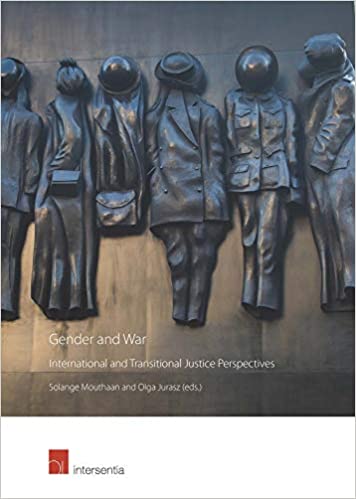 This book explores and challenges common assumptions about gender, conflict, and post-conflict situations. It critically examines the gendered aspects of international and transitional justice processes by subverting traditional understandings of how wars are waged, the power dynamics involved, and the experiences of victims. The book also highlights the gendered stereotypes that underpin the (mis)perceptions about gender and war in order to reveal the multi-dimensional nature of modern conflicts and their aftermaths. Featuring contributions from academics in law, criminology, international relations, politics and psychology, as well as legal practitioners in the field, Gender and War offers a unique and multi-disciplinary insight into contemporary understandings of conflict and explores the potential for international and transitional justice processes to evolve in order to better acknowledge diverse and gendered experiences of modern conflicts.
This book explores and challenges common assumptions about gender, conflict, and post-conflict situations. It critically examines the gendered aspects of international and transitional justice processes by subverting traditional understandings of how wars are waged, the power dynamics involved, and the experiences of victims. The book also highlights the gendered stereotypes that underpin the (mis)perceptions about gender and war in order to reveal the multi-dimensional nature of modern conflicts and their aftermaths. Featuring contributions from academics in law, criminology, international relations, politics and psychology, as well as legal practitioners in the field, Gender and War offers a unique and multi-disciplinary insight into contemporary understandings of conflict and explores the potential for international and transitional justice processes to evolve in order to better acknowledge diverse and gendered experiences of modern conflicts.
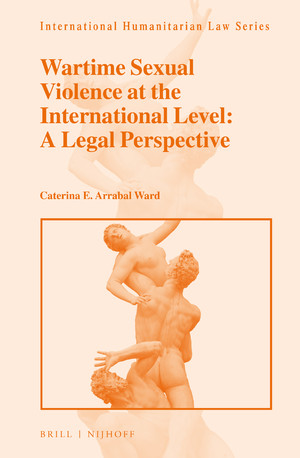 Wartime sexual violence at the international level: a legal perspective / by Caterina E. Arrabal Ward. Brill Nijhoff, 2018. [e-book available for ICRC staff]
Wartime sexual violence at the international level: a legal perspective / by Caterina E. Arrabal Ward. Brill Nijhoff, 2018. [e-book available for ICRC staff]
Dr. Caterina Arrabal Ward discusses the understanding of wartime sexual violence by the international tribunals and argues that wartime sexual violence often takes place without the explicit purpose to destroy a community or population and is not necessarily a strategic choice. This research suggests that a more focused approach based on a much clearer definition of these crimes would help to remedy deficiencies at the different stages of international justice in relation to these crimes.
Prosecuting conflict-related sexual violence at the ICTY / ed. by Serge Brammertz and Michelle Jarvis. Oxford University Press, 2016. [e-book available for ICRC staff]
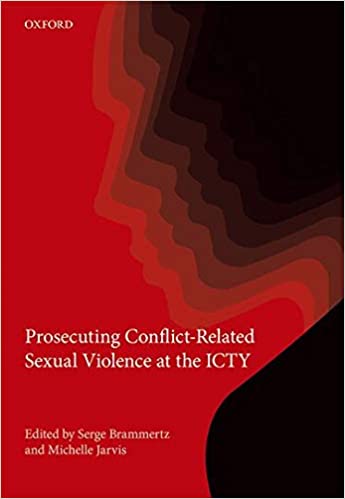 This book documents the experiences, achievements, challenges, and fundamental insights of the Office of the Prosecutor (OTP) of the International Criminal Tribunal for the Former Yugoslavia (ICTY) in prosecuting conflict-related sexual violence crimes at the ICTY over the past two decades. It draws on an extensive dossier of OTP documentation, court filings, trial exhibits, testimony, ICTY judgements, and other materials, as well as interviews with current and former OTP staff members. The authors provide a unique analytical perspective on the obstacles faced in prioritizing, investigating, and prosecuting conflict-related sexual violence crimes. While ICTY has made great strides in developing international criminal law in this area, this volume exposes the pressing need for determined and increasingly sophisticated strategies in order to overcome the ongoing obstacles in prosecuting conflict-related sexual violence crimes.
This book documents the experiences, achievements, challenges, and fundamental insights of the Office of the Prosecutor (OTP) of the International Criminal Tribunal for the Former Yugoslavia (ICTY) in prosecuting conflict-related sexual violence crimes at the ICTY over the past two decades. It draws on an extensive dossier of OTP documentation, court filings, trial exhibits, testimony, ICTY judgements, and other materials, as well as interviews with current and former OTP staff members. The authors provide a unique analytical perspective on the obstacles faced in prioritizing, investigating, and prosecuting conflict-related sexual violence crimes. While ICTY has made great strides in developing international criminal law in this area, this volume exposes the pressing need for determined and increasingly sophisticated strategies in order to overcome the ongoing obstacles in prosecuting conflict-related sexual violence crimes.
The book presents concrete recommendations to inform future work being done at the national and international levels, including that of the International Criminal Court, international investigation commissions, and countries developing transitional justice processes.
Read a book review of this title published in the International Review of the Red Cross: https://international-review.icrc.org/sites/default/files/irrc_99_905_22.pdf
Sexual violence as an international crime: interdisciplinary approaches / ed. by Anne-Marie de Brouwer, Charlotte Ku, Renée Römkens and Larissa van den Herik. Intersentia, 2012.
This edited volume focuses on developments in the prosecution of cases of sexual violence in (post-)conflict situations. The prosecution of those cases raises new and challenging questions as to how to build evidence, but also how to address victims’ concerns in that process. It will address innovations and challenges of empirical and other new kinds of social scientific, archival and medical data collection techniques; the development of evidence in relation to charges ranging from sexual violence as a war crime to genocide; and evidentiary and procedural differences and difficulties involved in prosecuting sexual victimization in domestic versus international courts.
Developing a humanitarian response: prevention and assistance to survivors
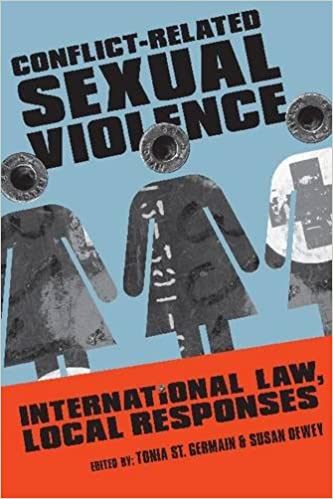 Conflict-related sexual violence: international law, local responses / ed. by Tonia St. Germain and Susan Dewey. Kumarian Press, 2012.
Conflict-related sexual violence: international law, local responses / ed. by Tonia St. Germain and Susan Dewey. Kumarian Press, 2012.
The result of a collaboration between a feminist legal scholar and an anthropologist, this volume presents original work by anthropologists, international human rights lawyers, legal theorists, political scientists, mental health professionals, and activists who report upon their respective research regarding responses to conflict-related sexual violence in Afghanistan, Bosnia-Herzegovina, Colombia, Haiti, Liberia, Sierra Leone, Somalia, and South Africa. Much more than a series of case studies, though, the bulk of the book addresses the implications of international responses to conflict-related sexual violence through analyses of the gaps between policy and practice with respect to efforts made by international organizations, criminal courts and tribunals to reduce or respond to conflict-related sexual violence.
Forced to report: the humanitarian impact of mandatory reporting on access to health care for victims/survivors of sexual violence in armed conflict and other emergencies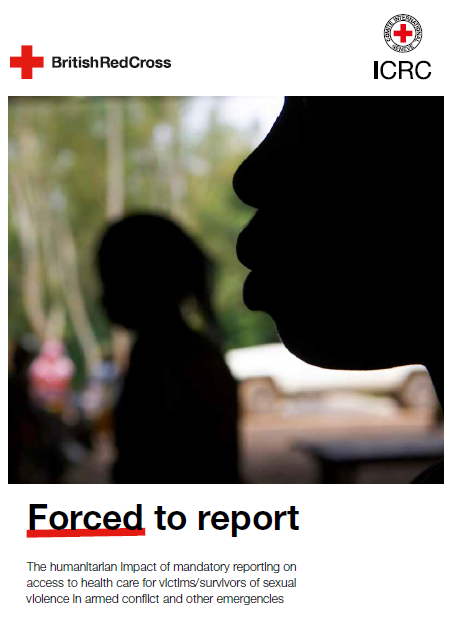 / Jessica Skinner, British Red Cross, 2020. [open access]
/ Jessica Skinner, British Red Cross, 2020. [open access]
Mandatory reporting is the obligation in certain countries for health-care personnel and other professionals to report known or suspected cases of sexual or gender-based violence to designated public authorities, notably to law enforcement agencies. The British Red Cross and the International Committee of the Red Cross conducted research in health care settings in four countries affected by armed conflict or other emergencies, which revealed that mandatory reporting of sexual violence in these contexts can obstruct access to health care for the victims/survivors of these crimes and may expose them to increased risk of secondary violence and harm. This paper analyses and produces evidence of the various challenges of providing health care where mandatory reporting of sexual violence exists and details the negative humanitarian impacts in armed conflict and other emergencies. The report makes recommendations to States that have mandatory reporting regimes, as well as to donors, health-care providers and the Red Cross and Red Crescent Movement, on how to respond to these dilemmas and better protect the health, safety and well-being of survivors.
Engaging with state armed forces to prevent sexual violence: a toolkit for ICRC staff on how to engage state armed forces in dialogue on preventing sexual violence in armed conflict / ICRC, Norwegian Red Cross. Geneva: ICRC, 2019. [open access]
 The toolkit is intended to help humanitarian staff engage state armed forces in dialogue on preventing sexual violence. It may also help ICRC delegations develop key messages and inform their longer-term work in promoting respect for the prohibition of sexual violence at all levels. Based on a study into how the prohibition of sexual violence under IHL has been integrated into military doctrine in various countries, the ICRC has identified current practices and obstacles to its implementation. The toolkit includes practical and adaptable modules to better understand armed forces and the ICRC’s definition of sexual violence, and covers the various entry points for initiating dialogue on sexual violence.
The toolkit is intended to help humanitarian staff engage state armed forces in dialogue on preventing sexual violence. It may also help ICRC delegations develop key messages and inform their longer-term work in promoting respect for the prohibition of sexual violence at all levels. Based on a study into how the prohibition of sexual violence under IHL has been integrated into military doctrine in various countries, the ICRC has identified current practices and obstacles to its implementation. The toolkit includes practical and adaptable modules to better understand armed forces and the ICRC’s definition of sexual violence, and covers the various entry points for initiating dialogue on sexual violence.
Sexual violence in detention / ICRC. Geneva: ICRC, 2017. [open access]
/ ICRC. Geneva: ICRC, 2017. [open access]
The ICRC has long been working to prevent and end sexual violence in armed conflicts and to ensure that the countless victims – men, women, boys and girls – receive the help they need. This publication examines sexual violence specifically in relation to people deprived of their liberty. The authors consider why individuals are at risk of sexual violence in detention and how to prevent and reduce that risk, before setting out some potential steps to take when sexual violence occurs.
Responding to the needs of survivors of sexual violence: do we know what works? / Doris Schopper. International Review of the Red Cross, Vol. 96, no. 894, Summer 2014. [open access]
 The issue of sexual violence in conflict and emergencies has recently received an unprecedented amount of attention at the highest political and institutional levels. However, reviews of interventions to prevent and respond to sexual violence in humanitarian settings have repeatedly pointed to the lack of evidence on which to base interventions. From a public health perspective, this apparent lack of an evidence base for responding effectively to the needs of survivors is worrisome. In this article, Doris Schopper illustrates the lack of evidence on which humanitarian actors base their responses, and why it matters, before discussing how to improve the evidence base.
The issue of sexual violence in conflict and emergencies has recently received an unprecedented amount of attention at the highest political and institutional levels. However, reviews of interventions to prevent and respond to sexual violence in humanitarian settings have repeatedly pointed to the lack of evidence on which to base interventions. From a public health perspective, this apparent lack of an evidence base for responding effectively to the needs of survivors is worrisome. In this article, Doris Schopper illustrates the lack of evidence on which humanitarian actors base their responses, and why it matters, before discussing how to improve the evidence base.
Browse the issue of the International Review of the Red Cross on sexual violence in armed conflict.
Further readings on sexual and gender-based violence in the ICRC Library collections


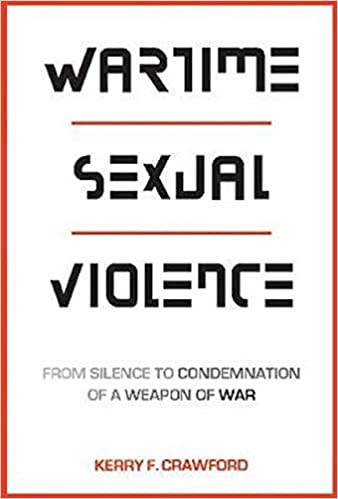
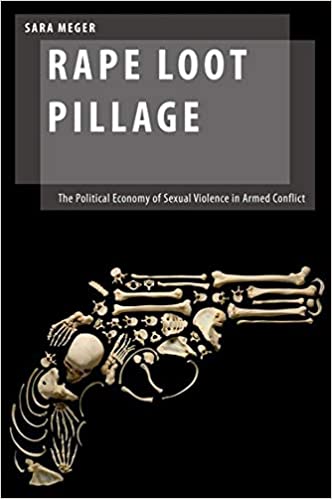

Comments